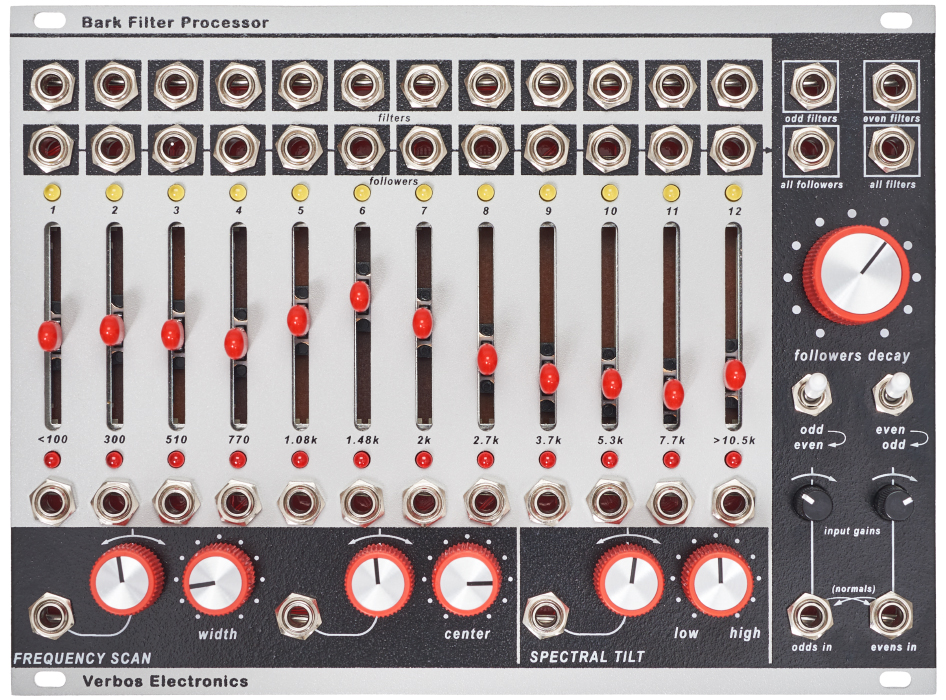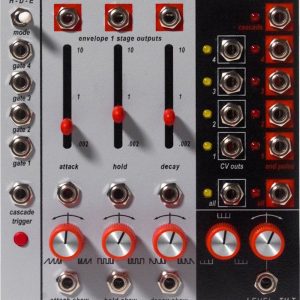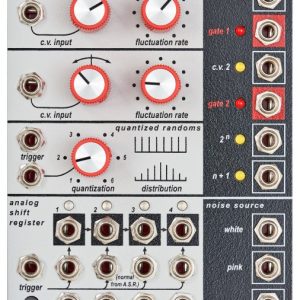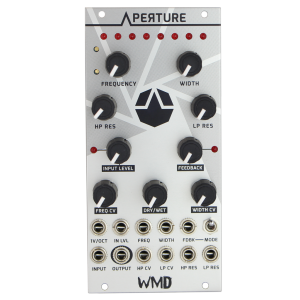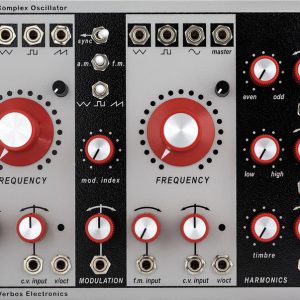Bark Filter Processor
£815.00
2 in stock
Description
Fixed Filter Bank
The Bark Filter Processor is a 12 band fixed filter bank with individual outputs and envelope followers on each band as well as a voltage controlled mixer for blending the outputs.
The filters are steep, 6th order bandpass filters with yellow LEDs indicating the level at the envelope followers’ outputs.
The voltage controlled mixer has sliders and individual CV ins and draws the, “center”, “width” and “tilt” controls from the Harmonic Oscillator allowing the fixed filters to be scanned across blended and mixed in various ways, all at the same time.
The even and odd filters can be patched in and out separately and one side’s followers can control the other side’s levels like a vocoder.
A voluminous, voltage controllable analog filter bank comprised of twelve filter bands with individual outputs for envelope followers and audio, individual level control and dynamic frequency band scanning. The envelope followers’ speed is globally adjustable.
Due to the individual audio inputs and outputs for odd and even filter bands the module can be patched to be a six-band vocoder. You can therefore combine two Bark Filters into a powerful 12-band vocoder.
The Bark Filter Processor is based on the Bark scale, a psychacoustic perceptual scale of pitches, thus the module’s twelve frequency bands originate from the Bark Scale. The lowest band uses a band pass filter, the highest uses a high pass, all other bands use band pass filters. Besides an individual audio output each band also features a separate envelope follower CV output.
The levels of the filter bands can be set and modulated in a number of ways. On one hand for each individual band manually with the fader and with a CV which is injected into the socket below the fader. On the other hand there is the scan function konwn from Verbos’ own Harmonic Oscillator which dynamically can control several bands, independent of the faders:
“Frequency Scan” sequentially scans through the frequency spectrum, with Center and Width determining the center frequency and bandwidth
“Spectral Tilt” either emphasizes the low or high harmonics.
Each filter band passes an individual envelope follower which emits a CV. The sum of all twelve EV-CVs is available at the all followers output, though. The envelope followers’ decay times are set globally which affects the quickness of the filterbank – longer settings might be fine for voice, shorter more suitable for percussive signals.
The module has two level-adjustable audio inputs, each one for the odd and the even filter bands which makes possible to use the Bark Filter Processor as a dual six-band filterbank. The inputs can be criss-crossed by normalizations in order to process the same audio signal with all frequency bands. There are three mix audio outputs: one for all even bands, one for all odd bands and one for all frequency bands.
How to construct a six-band vocoder? One half of the bands is used as analysis section and is fed with speech for instance; the other half of the bands makes for the synthesis section and is fed with oscillator and noise signals. Now patch the analysis section’s envelope follower outputs to the level CV inputs of the synthesis section – the vocoder signal will be present at the synthesis output.
Specification:
- width: 34HP
- depth: 30mm
- 210mA +12, 185mA -12

